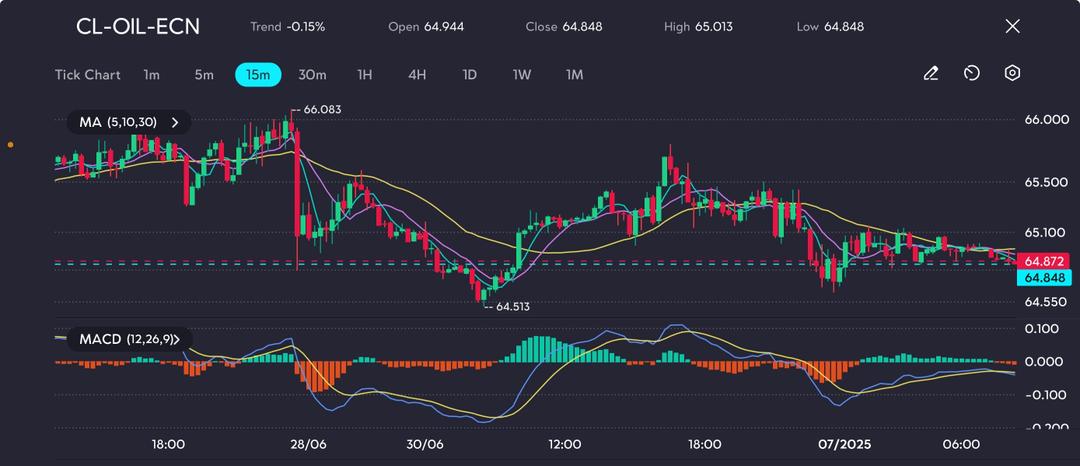
Key Points:
- WTI crude futures fell 0.2% to $64.96; Brent down to $66.62.
- OPEC+ reportedly considering a further 411,000 bpd output increase for August.
Oil prices eased slightly on Tuesday morning as traders turned cautious ahead of the 6 July OPEC+ meeting. West Texas Intermediate (WTI) crude slipped 0.2% to $64.96 per barrel, while Brent crude dropped to $66.62 per barrel.
Sentiment shifted after reports emerged that core OPEC+ members are discussing an additional 411,000 barrels per day (bpd) production increase for August. While not yet confirmed, the possibility of further supply growth has weighed on prices, particularly in light of softer demand projections and rising global inventories.
Broader Supply Narrative Keeps Bulls in Check
The market has been grappling with conflicting forces: improving risk appetite has broadly supported commodities, but rising U.S. inventories and the prospect of additional OPEC+ supply have kept bullish bets in check.
ANZ Research highlighted in its report that “the market is now concerned” about the pace of the OPEC+ alliance’s increases, especially as demand in Asia shows signs of plateauing. With global refinery margins under pressure and economic softness in China persisting, the case for a balanced oil market is weakening.
Until the OPEC+ outcome is clear, traders may remain defensive. A breakout above $65.50 would need stronger global demand cues or a surprise decision from producers. A break below $64.50 could accelerate downside momentum toward the $63.70 level.
Technical Analysis
Crude oil remains under pressure after failing to reclaim the recent high at $66.08. Price has since retraced into a sideways pattern, hovering just below the $65.00 psychological level and now settling around $64.85. The chart shows a gradual downtrend from the peak, followed by consolidation between $64.51 (support) and $65.10 (resistance).
Picture: Oil stalls under $65 as momentum fades, as seen on the VT Markets app
Short-term moving averages (5, 10, 30) are flattening out, suggesting waning momentum and a lack of clear direction. The MACD has crossed below the signal line, with the histogram flipping between red and green—indicative of indecision. A break below $64.51 could expose downside toward the $64.00 handle, while bulls need a close above $65.10 to regain control and challenge $65.50 and beyond.
If the July 6 meeting confirms additional production, oil could fall below $64.50 and test $64.00. However, if the group opts for moderation or signals tapering later this year, prices may stabilise back toward $65.50.










